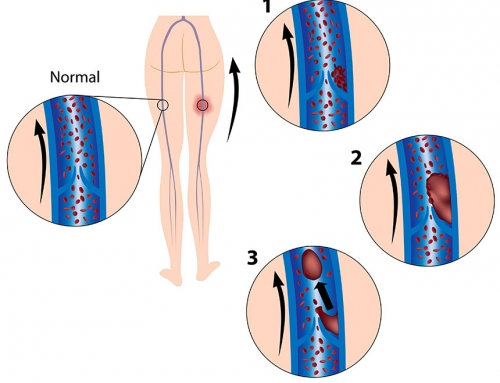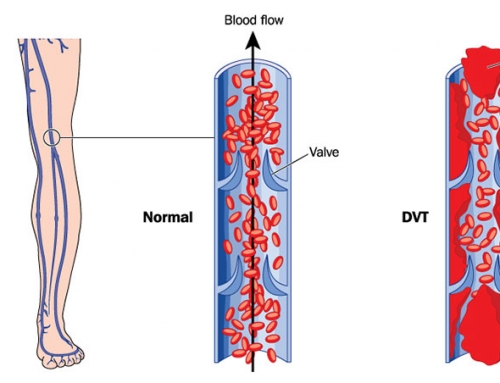What is Thrombosis?
Thrombosis is the obstruction of blood flow in the circulatory system due to a blood clot forming inside the blood vessels. This occurs either in arteries or veins. The blood clots slow down or block the flow of blood and oxygen to the heart and body tissues, leading to pain, tissue damage (infarcts) or possibly death. In some cases, an embolism occurs when part or all of the blood clot dislodges and travels away from the origin, where it can obstruct the blood flow in a different part of the body.
Venous thrombosis is the formation of a blood clot in a vein. There are different types of venous thrombosis, all classified according to where the thrombosis occurs in the veins. The most commonly observed type is deep vein thrombosis (DVT). Other types of venous thrombosis are portal vein thrombosis (liver), renal vein thrombosis (kidney), jugular vein thrombosis (neck), Budd-Chiari thrombosis (abdomen) and Page-Schroetter thrombosis (upper extremities). DVT is a blood clot that occurs in one of the deep veins in the body and often occurs in the deep veins of the legs. DVT causes swelling and pain in the affected area, and it might lead to further complications like pulmonary embolism. Pulmonary embolism is an obstruction in the pulmonary artery, where the embolized blood clot dislodges into the bloodstream and obstructs one of the blood vessels in the lungs. This leads to a sudden shortness of breath and extreme chest pain and can be life threatening.
Arterial thrombosis is formation of a blood clot in an artery. It often occurs after an artery is ruptured by atherosclerosis, a process where fatty deposits build up on the artery walls, causing hardening and narrowing of the arteries. The location where the clot formed is important, as specific locations of the clot can cause several serious medical conditions, such as myocardial infarction and stroke. A heart attack, also known as myocardial infarction, is caused by a blockage of blood supply to the heart. It can be due to a thrombus obstruction of a coronary artery inhibiting the blood and oxygen supply, leading to tissue death (infarction). Strokes are caused by a disrupted blood supply to the brain, due to ischemia, thrombus, embolus or hemorrhage. Arterial thrombosis is also capable of embolism, which could lead to infarction in almost all of the body organs. However, it should be noted that strokes and heart attacks also occur due to risk factors for cardiovascular disease and causes other than thrombosis.
References:
Gatt A, Makris M. Hyperhomocysteinemia and venous thrombosis (2007). Semin Hematol. 44(2): 70-6.
DNA In the News2017-04-06T20:02:10+00:00






